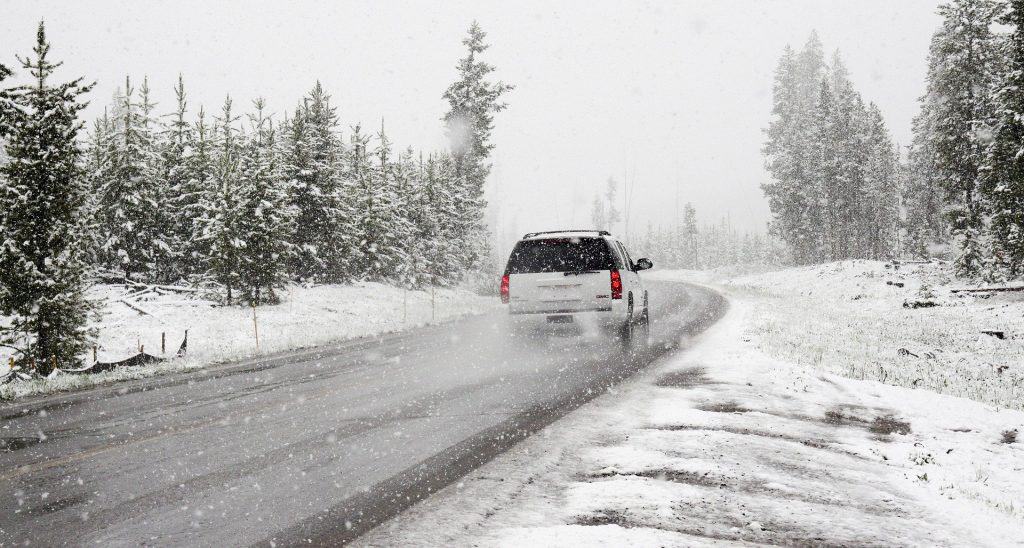With winter weather already in full effect, Colorado motorists have been contending with the changing road conditions. While winter driving can be nerve-racking for even the most experienced drivers, teens with minimal behind-the-wheel experience may be especially hesitant to drive in snowy and icy conditions. Parents can help their teenagers by working with them to feel safe and prepared when driving in the snow. February and March tend to be the snowiest months of the year in Colorado, which means this is a great time for parents to teach their sons and daughters how to get comfortable driving in the inclement weather. If you’re a parent who wants to help your adolescent learn how to safely navigate these winter conditions, here are a few important safety tips to keep in mind.
Take it Slow and Be Patient
It is important for parents to stay calm in order to help promote confidence in their teens’ driving skills when practicing on the road. Whether they just got their learners permits or have finally received their drivers licenses, teenagers will look to their parents for guidance. Although driving with adolescents can occasionally be stressful, parents can help reduce any tension by having open conversations with their sons and daughters before hitting the road. Determining clear goals in advance can help ensure that any feedback is focused and constructive.
It’s also helpful for parents to take the time to encourage good behavior in a positive manner, especially if their teens are nervous. Rather than harshly saying, “You’re going too fast in this weather; this is too dangerous,” parents can try a positive question approach, such as by asking what the speed limit is. Encouraging new drivers to take initiative of the situation can help them learn to be more aware of their surroundings.
Say No To Distracted Driving
About 60% of teen car collisions are caused by distractions. To address this issue, policy makers have implemented graduated licensing laws. These laws are designed to protect inexperienced drivers by having them gradually develop their behind-the-wheel skills. In Colorado, for example, teenagers under the age of 18 are banned from using cell phones while driving except in the case of an emergency. Parents can help enforce this rule by teaching their children to complete each text or call before entering the car. They can also model good behavior by avoiding distractions themselves. If a teenager sees his/her parent using a phone while driving, he/she is more likely to think that texting while driving is an acceptable behavior.
Practice Driving in a Safe Area
Although parents may initially want to keep their new drivers at home after a winter storm, they could use this as a time to teach their teens how to safely drive in snowy road conditions and prepare them for emergency situations. It’s better to help an inexperienced driver adapt to the inclement conditions in a gradual and cautious manner rather than opening up the possibility that his/her first experience of winter driving occurs during a heavy snowstorm while alone and unaware of what to do. To help their teen drivers get comfortable with the snow, parents can take them to empty lots and replicate or discuss the different issues that they could face on the road.
Some common issues that come with bad weather include:
Slippery Roads
Fishtailing is a common problem many vehicles face when driving during or after a winter storm. Fishtailing occurs when the back wheels of a vehicle lose traction on the road and cause the car to skid on the road’s surface rather than move in the direction that the driver is steering. If this happens, a driver should gently pump the brakes and take his/her foot off of the accelerator. It’s important to never slam on the brakes if a vehicle is fishtailing. The driver should remain calm and steer in the direction that he/she wants the vehicle to go in order to regain control of a vehicle during a skid.
Low Visibility
Snow, fog, and ice can all contribute to limited visibility when driving. Teen drivers must be educated to not drive in these harsh weather conditions unless absolutely necessary. If motorists are caught in heavy snow or on icy roads with low visibility, they may fare better by pulling over in a safe location and waiting it out. Additionally, they should make it a habit to turn on the defrost feature of their cars and ensure windshields are clear of all ice and snow before hitting the road.
Windshield Wipers Freezing Over
It is common for windshield wipers to freeze over in frigid temperatures. Parents can help keep their teens safe by educating them on windshield wiper blade maintenance. It is important to always test windshield wipers and clear all snow and ice from the windshield before taking off for a drive.
When teenagers are new to the road, parents may find it necessary to limit their sons and daughters’ driving privileges to daylight hours until they have gained more experience with winter road conditions.
Teach Teens Drivers To Avoid Dangerous Roadways
Some roadways are more vulnerable for drivers than others. A local law firm in Denver, The O’Sullivan Law Firm, created an interactive accident map noting the most dangerous motor vehicle collision hot spots in Denver within the last 12 months. This map helps drivers in Denver understand exactly which areas carry greater risk and allows them to choose safer routes. Parents can utilize tools like this to teach their young motorists what roads to avoid in order to keep them safe from areas that are more hazardous.
Teach Your Teenager About Defensive Driving Methods
The Colorado Department of Transportation states that the majority of collisions in 2020 were due to alcohol consumption, speeding, and violating lane traffic laws. Even when parents are confident in their teens’ driving abilities, they often are still concerned about other drivers’ actions on the road. DriveSafe Driving Schools offers a 3-hour defensive driving program that teaches new drivers the skills they need to face challenging road situations. With this course, drivers will learn advanced skills that will help them avoid hazards in the first place as well as strategies for safely handling any obstacles that may occur.
Hopefully you can use these tips to help your young driver adapt to Colorado winter roads in a safe and confident manner!
This is a guest post written by Amanda Clarke.
Amanda Clarke is a legal content writer that specializes in car safety and personal injury topics. When not writing, Amanda loves running marathons and playing with her rescue dog, Milo. You can reach her at [email protected].













